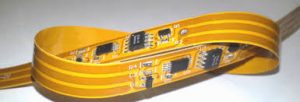Printed Flexible Circuits and Smart Packaging
Printed Flexible Circuits
The global market for smart packaging is expected to reach over 48 billion USD by 2024, and printed flexible circuits will have a huge role to play in this growth. Smart technology is being used by many companies to add functionality to their packaging that can improve customer experience and business outcomes. These functionalities can include tracking products during shipment, monitoring environmental conditions and even help authenticate real from counterfeit goods.
Printed flexible circuits (FFCs) are thin, flat, lightweight electronic components that replace the standard interconnection techniques such as soldered wires and hand-wired connectors. They are ideal for use in high-stress applications where the circuits will be subjected to continuous vibrations and mechanical stress. In addition, they offer better heat dissipation and electrical performance than rigid PCBs.
FFCs can be found in a wide variety of devices from mobile phones and tablets to computers and printers. They are also a critical component for smart packaging, as they allow for the integration of sensor technologies into the package itself. This allows for the creation of intelligent, connected packaging that can provide a more personalized customer experience and enhance product value.
A flex circuit is a printed electronic assembly made up of conductive traces on a flexible substrate with surface mount devices (SMD) attached to them. They are available in a range of sizes and thicknesses. The conductor layers can be made from a variety of materials, including copper foil. Depending on the application, they can be either single-sided or double-sided. Single-sided flex circuits consist of a single patterned conductor layer on a flexible dielectric film with termination features accessible only from one side.

Printed Flexible Circuits and Smart Packaging
These are the most commonly used type of flex circuits, and they are typically employed in IC packaging. Double-sided flex circuits contain a single conductor layer that is processed to allow access to the termination features from both sides. They are often employed in IC packages where tape automated bonding is employed.
In the case of smart packaging, a flex circuit can be embedded in the container or label and connects to sensors and actuators that monitor the condition of the packaged good. The data collected by the sensor can then be used to send a notification to a consumer or manufacturer, for example, if the package has been opened or tampered with.
As the COVID-19 pandemic changed consumer buying patterns, it was important for brands to establish a connection with their customers. For this reason, a number of retailers started using RFID to track inventory, which was especially useful for omnichannel retail models where consumers could order online and then pick up the items at a store location.
The use of RFID in smart packaging is only going to grow, as more and more businesses look for ways to add intelligence to their packaging at every stage of the supply chain. This is particularly true for healthcare companies, where flexible and printed electronics can be used to ensure the safety and quality of their products. For instance, Jones Healthcare Group has developed a system that can notify patients when it’s time to take their medication, via SMS text message or email.

